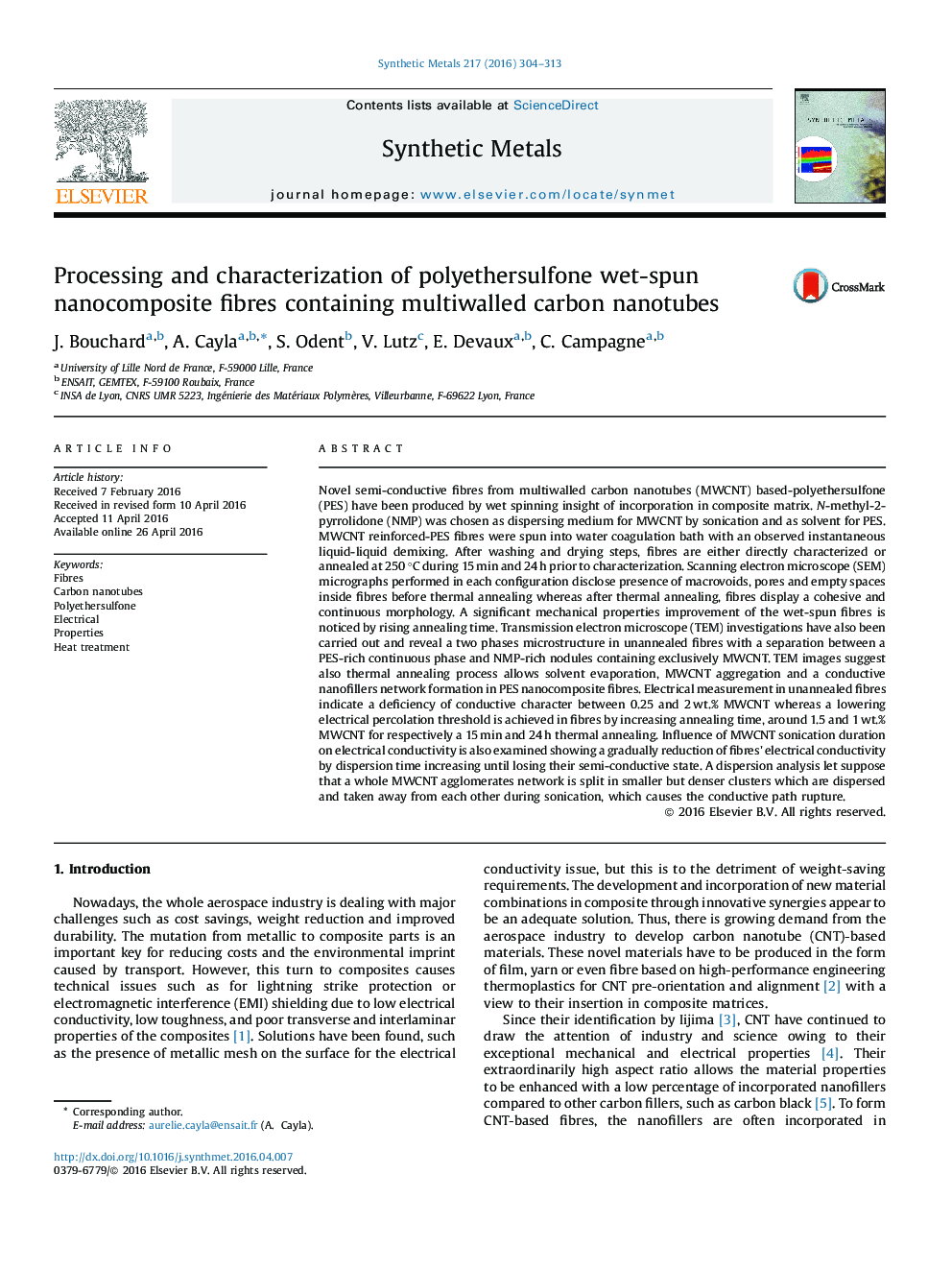| کد مقاله | کد نشریه | سال انتشار | مقاله انگلیسی | نسخه تمام متن |
|---|---|---|---|---|
| 1440204 | 1509360 | 2016 | 10 صفحه PDF | دانلود رایگان |
• Wet spinnability of PES filled with MWCNT.
• Influence of annealing treatment on electrical properties.
• Analyse of size distribution of MWCNT agglomerate areas in longitudinal axis after thermal annealing with several dispersion time (sonication duration).
• Correlation between fiber morphologies and mechanical properties.
Novel semi-conductive fibres from multiwalled carbon nanotubes (MWCNT) based-polyethersulfone (PES) have been produced by wet spinning insight of incorporation in composite matrix. N-methyl-2-pyrrolidone (NMP) was chosen as dispersing medium for MWCNT by sonication and as solvent for PES. MWCNT reinforced-PES fibres were spun into water coagulation bath with an observed instantaneous liquid-liquid demixing. After washing and drying steps, fibres are either directly characterized or annealed at 250 °C during 15 min and 24 h prior to characterization. Scanning electron microscope (SEM) micrographs performed in each configuration disclose presence of macrovoids, pores and empty spaces inside fibres before thermal annealing whereas after thermal annealing, fibres display a cohesive and continuous morphology. A significant mechanical properties improvement of the wet-spun fibres is noticed by rising annealing time. Transmission electron microscope (TEM) investigations have also been carried out and reveal a two phases microstructure in unannealed fibres with a separation between a PES-rich continuous phase and NMP-rich nodules containing exclusively MWCNT. TEM images suggest also thermal annealing process allows solvent evaporation, MWCNT aggregation and a conductive nanofillers network formation in PES nanocomposite fibres. Electrical measurement in unannealed fibres indicate a deficiency of conductive character between 0.25 and 2 wt.% MWCNT whereas a lowering electrical percolation threshold is achieved in fibres by increasing annealing time, around 1.5 and 1 wt.% MWCNT for respectively a 15 min and 24 h thermal annealing. Influence of MWCNT sonication duration on electrical conductivity is also examined showing a gradually reduction of fibres' electrical conductivity by dispersion time increasing until losing their semi-conductive state. A dispersion analysis let suppose that a whole MWCNT agglomerates network is split in smaller but denser clusters which are dispersed and taken away from each other during sonication, which causes the conductive path rupture.
Figure optionsDownload as PowerPoint slide
Journal: Synthetic Metals - Volume 217, July 2016, Pages 304–313
